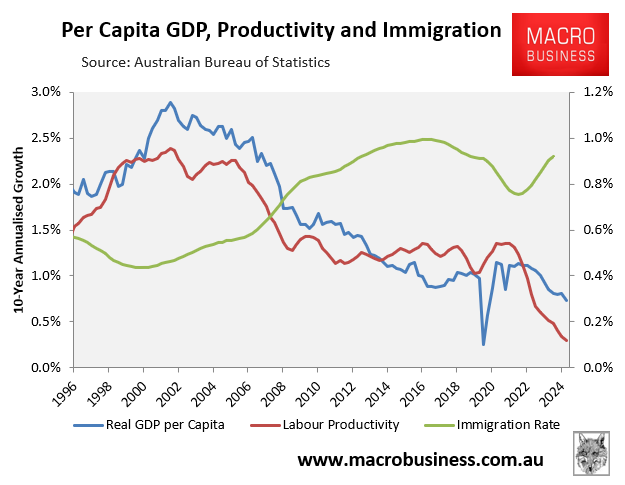…at the heart of our productivity problem is a collapse in the efficiency of labour allocation within our economy.
The retirement of the baby boomer generation has seen a profound shift in the balance of supply and demand for workers in our economy. Migration doesn’t solve the problem as every new worker entering the economy from overseas brings demand with them.
…In the midst of this epochal demographic cycle turning point, we have a government dominating the labour market. The government’s rapid expansion of support for the care economy and public services more generally is pushing demand for labour into an economy that is short of workers. The private sector is struggling to find suitable labour, another factor making many types of traditional business expansion difficult.
…It is little wonder that we are seeing a collapse in productivity. The collision of demographically driven labour shortages and an expansionist government sector is driving productivity into the ground. No solution to our productivity problem will be found until the government pulls back on uncontested job creation.
…At this stage, the RBA seems to think a neutral cash rate is about 3.5%. There is no reason to wait. The RBA board should act decisively at the next meeting in July with an uncharacteristic 35-basis-point rate cut.


